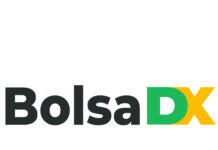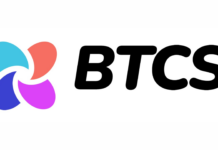The advantages of cryptocurrencies combined with the stability of traditional finance. Can stablecoins become the catalyst to mass adoption in decentralized finance?
The Rise of Stablecoins
Stablecoins rose to the public consciousness in 2015, with the emergence of Tether (USDT). For the first time, traders had an opportunity to easily hedge against the crypto market’s trademark volatility via a digital currency collateralized in fiat. Tether’s dominance still shines strong today, with a $4.13 billion market cap and 24-hour trading volume of $25 billion.
Regardless of Tether’s supremacy, the rising prevalence of collateralized digital currencies as a whole is becoming more evident. According to a crypto analytics firm, there are now more than 50 varieties of stablecoins on the market. This accounts for a significant 2.7% of the total cryptomarket cap.
Even Christine Lagarde, the newly appointed chief of the European Central Bank (ECB), recently came out in stark support of the burgeoning stablecoin industry. Within her first speech as the EBC chief, Lagarde praised stablecoins:
“Given the developments, we are seeing, not so much in the Bitcoin segment, but in the stablecoins projects, the ECB needs to be ahead of the curve” she noted, adding, “there is clearly a demand out there that we have to respond to.”
Money on Chain: The Bitcoin-Focused Future of DeFi
Looking to instill change by focusing solely on Bitcoin and its native blockchain is Money on Chain. Boasting the first decentralized stablecoin protocol powered by Bitcoin’s own underlying technology, Money on Chain utilizes RSK — a smart contract platform— to create DeFi services for the Bitcoin ecosystem.
Following months of grueling testing and multiple audits, the Bitcoin-backed stablecoin project is now up and running, providing additional utility for Bitcoin holders.
Made up of a two-fold token system, Money on Chain caters for investors looking for stability as well as opportunity via volatility. Here´s a quick description of each of the tokens within MOC´s ecosystem:
- The Dollar on Chain (DOC) is a stable token that will be pegged to the US dollar with a value of USD 1 per DOC. This makes it ideal for individuals who are averse to the risk of Bitcoin and seek stability in the volatile cryptocurrency environment.
- BPRO is a token for Bitcoin holders that will absorb the unwanted Bitcoin risk from the DOC. It will pass part of this on to the leveraged Bitcoin operations exchange, earning BPRO holders a passive income, while also keeping some free leverage.
- The MOC token will have three functions:
- MOC holders will have a discount when paying the fees for the use of the platform using MOCs.
- MOC holders will have the power to vote and veto the platform updates.
- MOC is used as an incentive for those who run “MOC” nodes and as an incentive to BitPro holders.
Money on Chain’s vision is a world where transactions are instant, cost-efficient and free from the volatility of the current cryptocurrencies markets. International trade should be frictionless so individuals and companies can use the blockchain to meet the demands of regulators.
Money on Chain hence takes the best of both worlds, decentralization, security, immutability of Bitcoin and the stability of traditional fiat to create such a solution.
















